
The Battle of Palo Alto was the first major battle of the Mexican–American War and was fought on May 8, 1846, on disputed ground five miles (8 km) from the modern-day city of Brownsville, Texas. A force of some 3,700 Mexican troops – most of the Army of The North – led by General Mariano Arista engaged a force of approximately 2,300 United States troops – the Army of Occupation led by General Zachary Taylor.
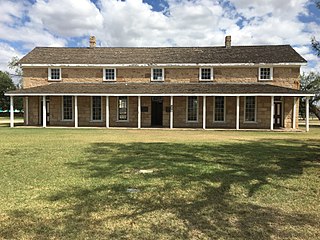
Fort Concho is a former United States Army installation and National Historic Landmark District located in San Angelo, Texas. It was established in November 1867 at the confluence of the North and South Concho Rivers, on the routes of the Butterfield Overland Mail Route and Goodnight–Loving Trail, and was an active military base for the next 22 years. Fort Concho was the principal base of the 4th Cavalry from 1867 to 1875 and then the "Buffalo Soldiers" of the 10th Cavalry from 1875 to 1882. The troops stationed at Fort Concho participated in Ranald S. Mackenzie's 1872 campaign, the Red River War in 1874, and the Victorio Campaign of 1879–1880.
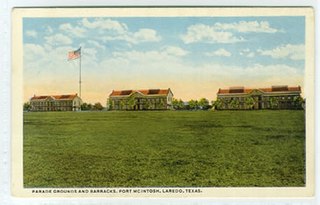
Fort McIntosh was a U.S. Army base in Laredo, Webb County, Texas, from 1849 to 1946.

Fort Duncan was a United States Army base, set up to protect the first U.S. settlement on the Rio Grande near the current town of Eagle Pass, Texas.
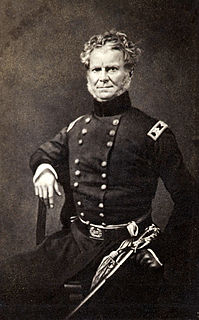
The history of Fort Worth, Texas, in the United States is closely intertwined with that of northern Texas and the Texan frontier. From its early history as an outpost and a threat against Native American residents, to its later days as a booming cattle town, to modern times as a corporate center, the city has changed dramatically, although it still preserves much of its heritage in its modern culture.
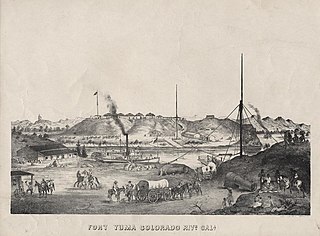
Fort Yuma was a fort in California located in Imperial County, across the Colorado River from Yuma, Arizona. It was on the Butterfield Overland Mail route from 1858 until 1861 and was abandoned May 16, 1883, and transferred to the Department of the Interior. The Fort Yuma Indian School and the Saint Thomas Yuma Indian Mission now occupy the site. It is one of the "associated sites" listed as Yuma Crossing and Associated Sites on the National Register of Historic Places in the Yuma Crossing National Heritage Area. In addition, it is registered as California Historical Landmark #806.
The Forts of Texas include a number of historical and operational military installations. For over two hundred years, various groups fought over access to or control over the region that is now Texas. Possession of the region was claimed and disputed by the European powers of Spain and France, and the continental countries of Mexico, the United States, the Republic of Texas, and the Confederate States of America. Ownership of specific lands was claimed and disputed by different ethnic groups, including numerous Native American tribes, Mexican residents, Anglo- and African-American settlers, and European immigrants. Access to and control of resources were claimed and disputed by various economic groups, including indigenous hunter/gatherers, farmers, herders, ranchers, colonists, settlers, buffalo hunters, traders, bandits, smugglers, pirates, and revolutionaries. Over the centuries, claims and disputes were enforced by Native American warriors, Spanish conquistadors, French cavaliers, Texas Rangers, local militias, and uniformed regular army regiments of Spain, Mexico, Texas, the United States, and the Confederacy.

The Fort McKavett State Historic Site is a former United States Army installation located in Menard County, Texas. The fort was first established in 1852 as part of a line of forts in Texas intended to protect the frontier and migrants traveling to California. The fort was deemed unnecessary and abandoned in 1859 and was occupied by settlers. From 1861 to 1863, during the American Civil War, the fort became an outpost of Confederate forces on the Texas frontier until they left for other theaters of the war. When the US Army returned to Texas in the later 1860s, the fort was reoccupied and rebuilt, and became a base for the "Buffalo Soldier", or all-African American, 24th Infantry and 9th Cavalry Regiments.
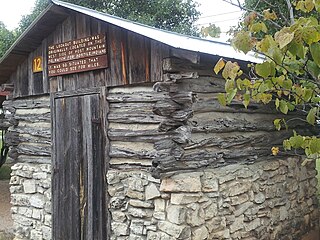
Fort Croghan was the third of the first four forts established by the United States government to protect settlers from hostile Indians along the Texas frontier. From its establishment on March 18, 1849, by Lt. C.H. Taylor until it was abandoned in 1855, Fort Croghan was home to Company C, 8th Infantry, U.S.A. (mounted), and eventually became the headquarters of the Second Dragoon Regiment.
Peter Kerr, also known as Peter Carr, was one of the founders of Burnet, Texas and a member of the Old Three Hundred, the original settlers in Stephen F. Austin's colony.
Richard Woodward Colcock was the second Superintendent of the South Carolina Military Academy from 1844 through 1852.
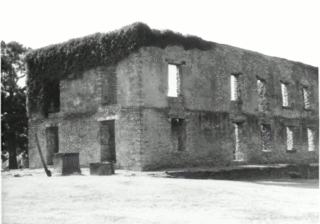
Fort Washita is the former United States military post and National Historic Landmark located in Durant, Oklahoma on SH 199. Established in 1842 by General Zachary Taylor to protect citizens of the Choctaw and Chickasaw Nations from the Plains Indians it was later abandoned by Federal forces at the beginning of the American Civil War. Confederate troops held the post until the end of the war when they burned the remaining structures. It was never reoccupied by the United States military. After years in private hands the Oklahoma Historical Society bought the fort grounds in 1962 and restored the site. Today, the Fort Washita Historic Site and Museum is a tourist attraction and hosts several events throughout the year, and it is jointly managed by the Chickasaw Nation and the Oklahoma Historical Society.

Robert Simpson Neighbors was an Indian agent and Texas state legislator. Known as a fair and determined protector of Indian interests as guaranteed by treaty, he was murdered for his beliefs by a Texan who disagreed with giving any rights to the Comanches.
Fort Martin Scott is a restored United States Army outpost near Fredericksburg in the Texas Hill Country, United States, that was active from December 5, 1848, until April, 1853. It was part of a line of frontier forts established to protect travelers and settlers within Texas.

Fort Graham was a pioneer fort established in 1849 by Brevet Major R.A. Arnold at the site of Jose Maria Village, an Anadaca camp on the western edge of present-day Hill County, Texas. It remained in service until 1853, when settlements had moved further west. It was named after Col. William M. Graham, who died at the Battle of Molina del Rey.
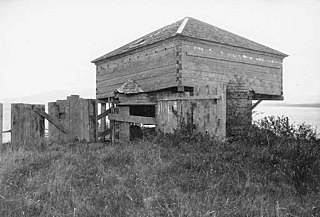
Fort Bellingham (1856–1860) was a U.S. Army fort built to prevent attacks by Indians from Canada and from Russian territory, on the bayside villages of Fairhaven, Sehome and Whatcom.

Arthur Tracy Lee served as an officer in the regular army before and during the American Civil War. He was also an author, painter, musician, and an architect.

Fort Clark was a frontier fort located just off U.S. Route 90 near Brackettville, in Kinney County, Texas, United States. It later became the headquarters for the 2nd Cavalry Division. The Fort Clark Historic District was added to the National Register of Historic Places on December 6, 1979. The Commanding Officer's Quarters at Fort Clark were designated a Recorded Texas Historic Landmark in 1988. The Fort Clark Guardhouse became a Recorded Texas Historic Landmark in 1962. The Fort Clark Officers' Row Quarters were designated a Recorded Texas Historic Landmark in 1991.
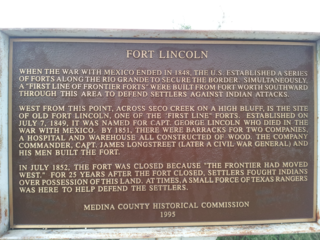
Fort Lincoln is a town in Medina County, Texas. It was established on July 7, 1849 by Major James Longstreet, with two companies of the Eighth United States Infantry, after the Mexican–American War. The fort is named in honor of Captain George Lincoln who was killed in the Battle of Buena Vista. The fort was abandoned on July 20, 1852.
William Reading Montgomery was a career United States Army officer who served in the Second Seminole War and Mexican–American War. He was a brigadier general in the Union Army from May 17, 1861 to April 4, 1864 during the American Civil War.
















